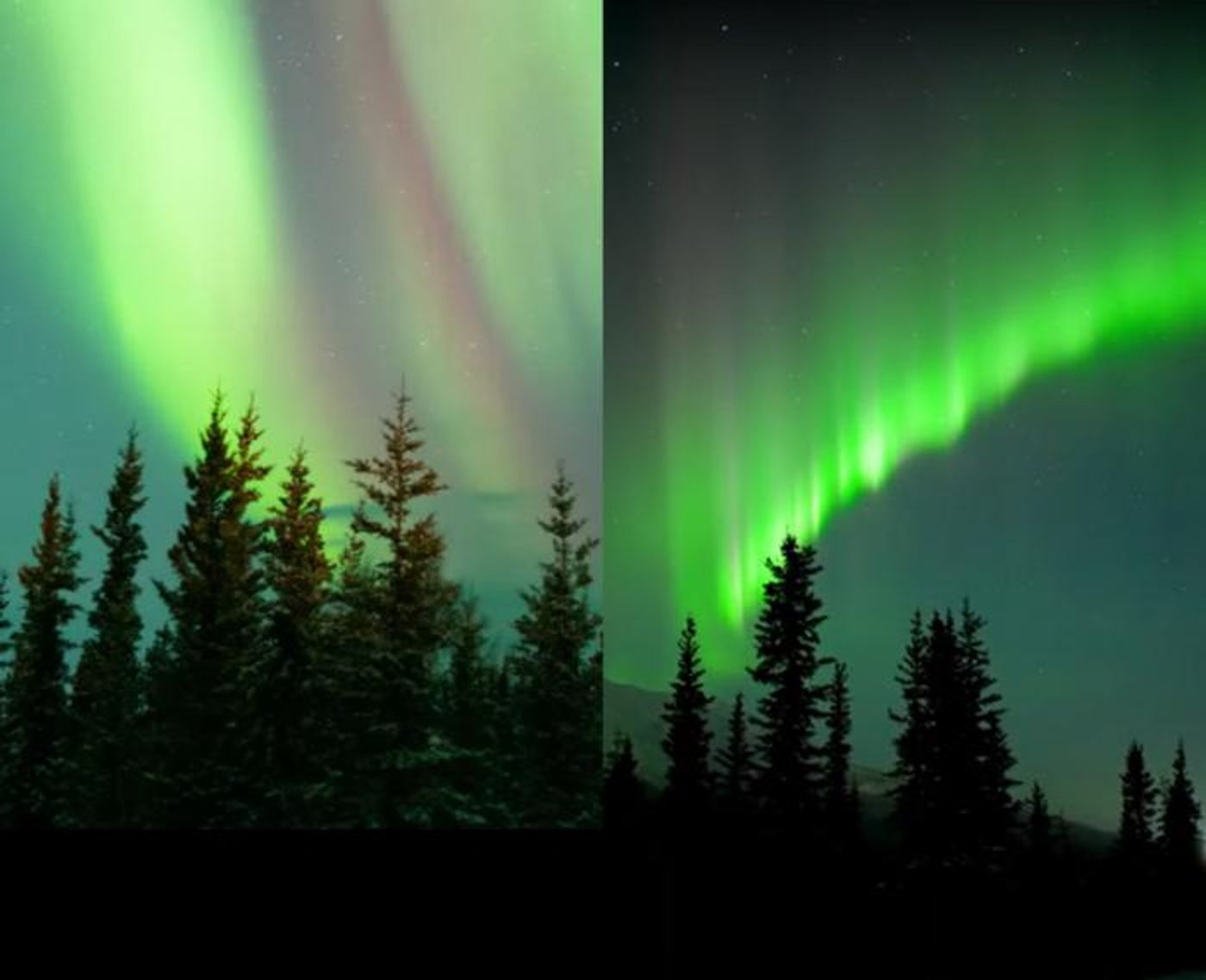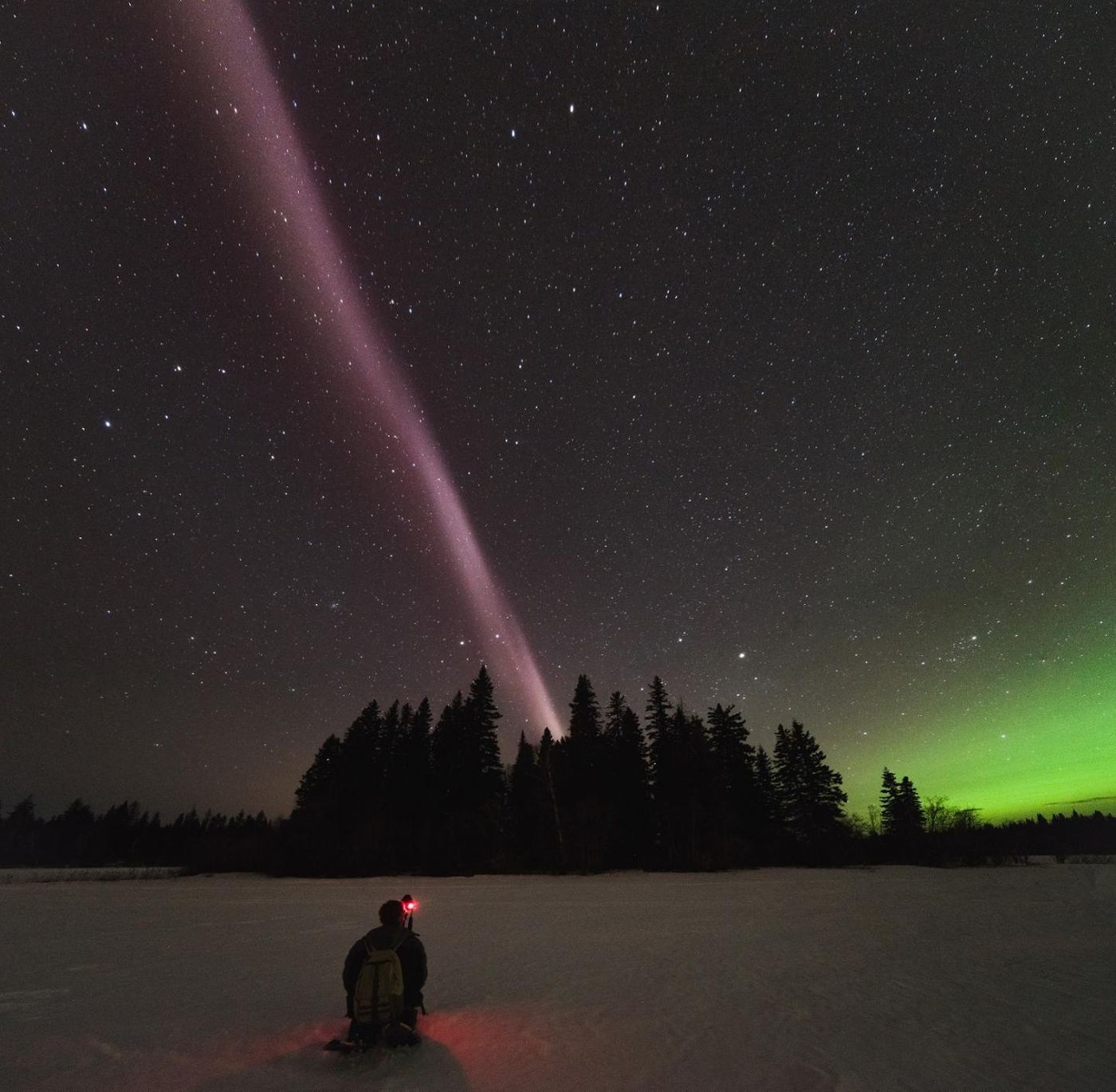Picket Fences & STEVEs - What Causes These Aurora-Like Phenomena?
Geomagnetic storms cause auroras, also known as the northern lights (aurora borealis) or southern lights (aurora australis). These spectacular displays of light wave through the night sky of the far northern and southern parts of the planet. But recently other light displays known as picket fences and STEVEs (Strong Thermal Emission Velocity Enhancements) have been identified; they were initially observed in 2018 and given a playful name - "Steve," by citizen scientists, and academic scientists later found a way to make it fit. These displays are similar to auroras, but are not. Now, a researcher has a hypothesis about how they form.
Activity on the sun is ramping up as it reaches a certain period of its eleven-year cycle, in which solar storms and coronal mass ejections happen more frequently.
Auroras happen when the sun's solar wind energizes particles in the Earth's magnetosphere, causing them to move around the planet's magnetic field lines toward the poles. Once there, they hit and excite oxygen and nitrogen that emits frequencies of green, red, or blue lights as they relax.
Steve displays more colors, however, which are more in the purple range. Neither Steves nor picket fences emit blue light, which is caused by the ionization of nitrogen. Steves and picket fences are also seen at lower latitudes compared to auroras, and sometimes as far south as the equator.
Physics graduate student Claire Gasque of the University of California, Berkeley, has proposed a mechanism that explains these phenomena. A moderate parallel electric field with a height of about 110 km was shown to be sufficient to accelerate electrons enough to cause the excitation of oxygen and nitrogen, producing picket fence lighting, using a standard physical model of the ionosphere.
Electric fields at lower altitudes, and parallel to the Earth's magnetic field, were thought to disappear, and would have been unable to generate picket fences or Steves. But when certain unusual variables were introduced into the system, like lower densities of charged plasma or oxygen and nitrogen atoms that were more neutral, there was the potential for a kind of insulation that prevented the electric field from shorting out.
"The light from the picket fence is being created by particles that have to be energized right there in space by a parallel electric field, which is a completely different mechanism than any of the aurora that we've studied or known before," said Gasque. Steve could involve similar processes.
Variations in the electric field, which are wave-like, may cause the picket fence shape of the lights.
"The enhanced aurora is basically this bright layer that's embedded in the normal aurora. The colors are similar to the picket fence in that there's not as much blue in them, and there's more green from oxygen and red from nitrogen. The hypothesis is that these are also created by parallel electric fields, but they are a lot more common than the picket fence," Gasque said.
Now, researchers are hoping that NASA will launch a rocket into the aurora to assess the direction and strength of the electric and magnetic fields to test the hypothesis.
Sources: University of California Berkeley, Geophysical Research Letters










